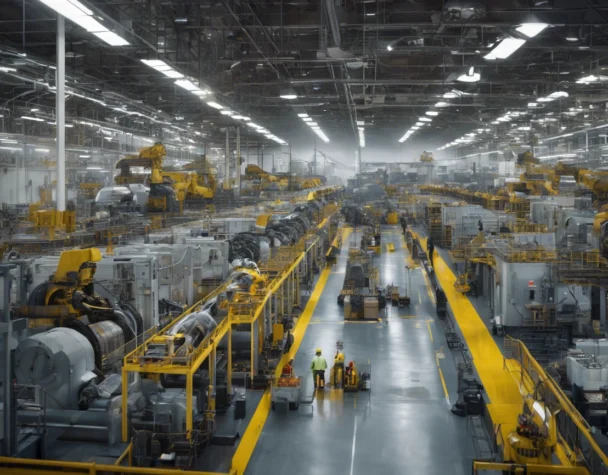
The Potential Positive Outcomes of U.S. Tariffs Under Trump in 2025
Tue, December 10, 2024In 2025, the Trump administration reintroduced tariffs as a key economic policy tool, drawing sharp debates. While tariffs are often criticized for disrupting global trade and raising costs for consumers, they can yield significant benefits for the U.S. economy. By targeting specific sectors and trading partners, these measures could serve as catalysts for domestic growth, national security, and equitable trade practices.
1. Boosting Domestic Industries
Tariffs can act as a protective shield for U.S. industries, reducing competition from cheaper imports. For sectors like steel, aluminum, and technology, tariffs incentivize domestic production by leveling the playing field. As foreign goods become more expensive due to import taxes, U.S.-based businesses gain a price advantage, driving investments in manufacturing and job creation.
For example, earlier tariffs on steel under the Trump administration led to increased investments in domestic steel mills, rejuvenating an industry that had been declining for decades. If the new tariffs continue this trend, industries critical to infrastructure and defense could see sustained growth.
2. Promoting Manufacturing and Job Creation
A resurgence in local manufacturing is another potential outcome. As companies find importing goods less economically viable, they may choose to relocate production facilities to the U.S. This not only creates jobs but also strengthens local economies.
The Biden administration’s focus on reshoring critical supply chains for products like semiconductors and medical equipment provides a blueprint for leveraging tariffs. By complementing these efforts, Trump’s 2025 tariffs could deepen the focus on building self-sufficient supply chains, ensuring that key industries remain resilient during global disruptions.
3. Reducing Trade Deficits
The U.S. has long grappled with trade deficits, particularly with China. Tariffs can be an effective strategy to address these imbalances by discouraging imports and encouraging exports. A reduced trade deficit strengthens the dollar’s position globally and improves overall economic stability.
For example, earlier tariffs on Chinese goods led some U.S. companies to diversify their sourcing strategies, decreasing reliance on a single trading partner. This diversification could help the U.S. reduce vulnerabilities tied to economic overdependence.
4. Encouraging Fair Trade Practices
Tariffs can serve as leverage to negotiate better trade agreements. Countries heavily reliant on the U.S. market may agree to reduce unfair practices like currency manipulation, intellectual property theft, and government subsidies to their industries.
In past negotiations, such as the U.S.-Mexico-Canada Agreement (USMCA), the threat of tariffs brought trading partners to the table, resulting in more equitable deals. If implemented strategically, the 2025 tariffs could foster similar outcomes, ensuring U.S. businesses face fair competition globally.
5. Strengthening National Security
Some tariffs, particularly on technology and defense-related imports, align with national security goals. By restricting the flow of sensitive materials and technologies from adversarial nations, the U.S. can protect critical infrastructure and intellectual property.
In 2025, tariffs targeting sectors like telecommunications and rare earth minerals could reduce reliance on imports from China, a geopolitical rival. This would not only secure U.S. supply chains but also enhance its technological independence.
6. Driving Innovation and Sustainability
Tariffs can incentivize companies to innovate. As imported goods become costlier, businesses might explore alternative materials, processes, or technologies to remain competitive.
This push for innovation aligns with global trends toward sustainability. For instance, tariffs on fossil fuel imports could accelerate the transition to renewable energy, driving investments in solar, wind, and battery technologies.
Challenges and Mitigation
While the benefits are clear, tariffs are not without challenges. Critics argue that they increase consumer costs and provoke retaliatory measures. For example, earlier rounds of tariffs led to price hikes for goods like washing machines and electronics.
To mitigate these issues, the government could complement tariffs with targeted subsidies for affected industries, tax relief for consumers, and diplomacy to minimize trade conflicts. By balancing protective measures with strategic investments, the U.S. can maximize the positive outcomes of tariffs.
Conclusion
The 2025 tariffs represent a bold approach to reshaping the U.S. economy. If managed carefully, they could bolster domestic industries, create jobs, and enhance national security. While challenges exist, the potential for long-term gains makes this a critical policy worth monitoring.
For policymakers, businesses, and consumers, the key will be navigating these changes collaboratively to ensure the benefits outweigh the costs.

